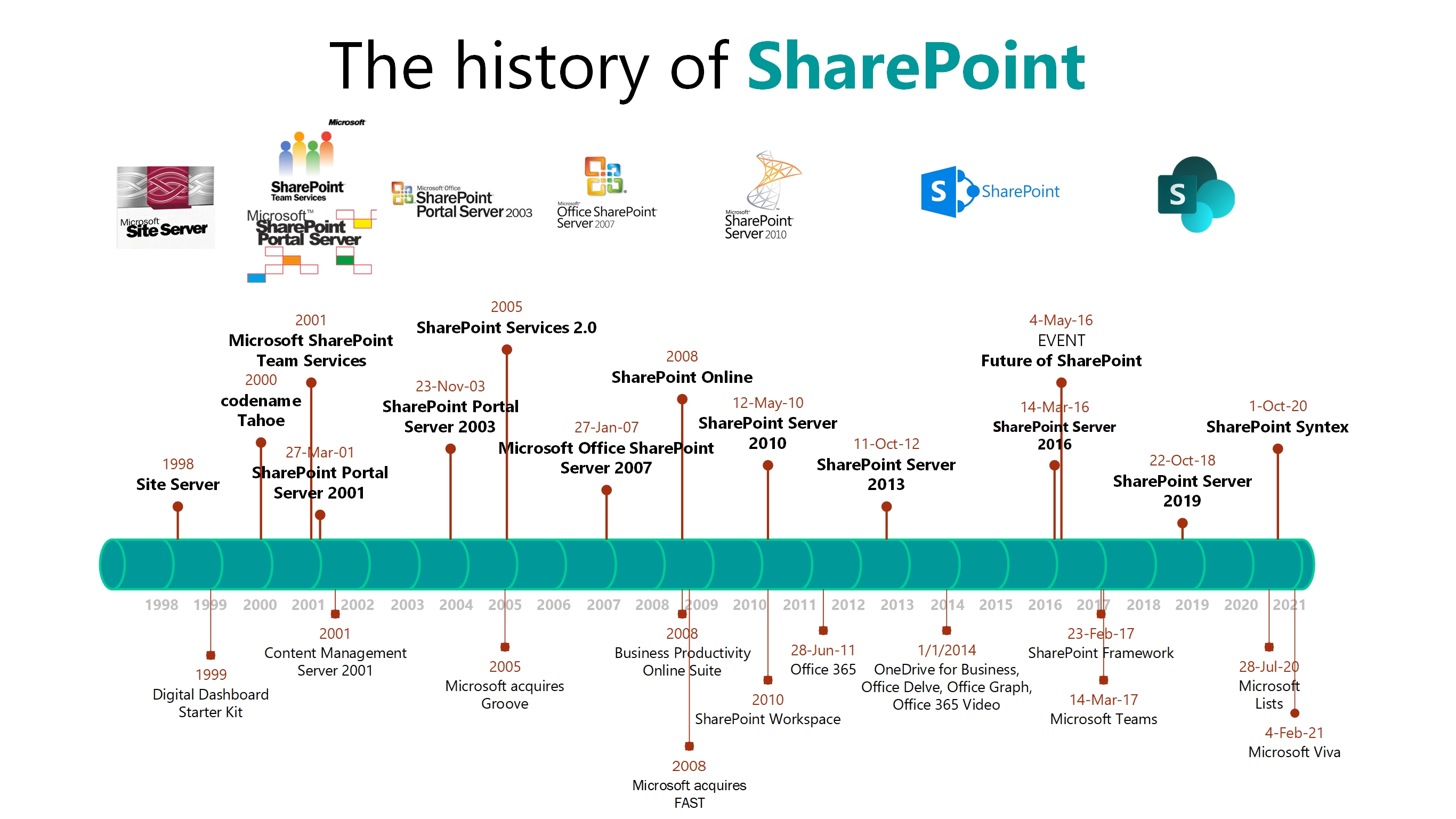
Microsoft SharePoint has come a long way since its inception in 2001. Initially designed as a document management and storage system, it has evolved into a comprehensive platform that enables organizations to collaborate, share information, and automate business processes. In this blog, we will explore the evolution of Microsoft SharePoint and the key features that have been added over the years.
SharePoint 2001
Microsoft SharePoint was launched in 2001 as a web-based collaboration and document management system. It was designed to help organizations store and manage their documents, collaborate on projects, and share information within their organization. SharePoint 2001 was built on Microsoft Windows SharePoint Services (WSS) and provided basic document management capabilities such as versioning, check-in/check-out, and document search.
SharePoint 2003
SharePoint 2003 was released in 2003, and it was a significant upgrade from its predecessor. It introduced the concept of web parts, which allowed users to customize the SharePoint interface and create their own web pages. SharePoint 2003 also introduced workflows, which allowed organizations to automate their business processes, and it included improved document management features.
SharePoint 2007
SharePoint 2007 was a major release for Microsoft. It introduced a completely redesigned user interface and improved collaboration features, including blogs, wikis, and discussion forums. SharePoint 2007 also included enhanced search capabilities, which made it easier for users to find the information they needed. Another important feature was the introduction of content types, which allowed organizations to define and manage their own document types.
SharePoint 2010
SharePoint 2010 was released in 2010, and it was a significant upgrade from its predecessor. It included a wide range of new features, including improved collaboration tools, social networking features, and enhanced search capabilities. SharePoint 2010 also introduced Business Connectivity Services (BCS), which allowed organizations to connect to external data sources, such as databases and web services.
SharePoint 2013
SharePoint 2013 was released in 2013 and brought a host of new features to the platform. One of the most significant new features was the introduction of SharePoint Apps, which allowed developers to create custom applications that could be deployed to SharePoint. SharePoint 2013 also introduced the concept of cross-site publishing, which made it easier to share content across multiple SharePoint sites. Another important new feature was the introduction of e-discovery capabilities, which made it easier for organizations to manage legal discovery requests.
SharePoint 2016
SharePoint 2016 was released in 2016 and was designed to improve the user experience and make it easier for organizations to manage their content. It included a new hybrid architecture that allowed organizations to connect their SharePoint environment to Office 365, which provided new collaboration and communication features. SharePoint 2016 also introduced a new file-sharing interface that made it easier for users to share files with external users.
SharePoint 2019
SharePoint 2019 was released in 2019 and was the latest on-premises version of SharePoint. It included a range of new features, including improved support for large files, modern user interfaces, and improved search capabilities. SharePoint 2019 also included new development frameworks that made it easier for developers to build custom solutions on the platform.
SharePoint Online is part of Office 365, and it provides a cloud-based version of SharePoint. It includes all the features of the on-premises version, as well as additional features that are only available in the cloud. One of the most significant new features in SharePoint Online is Microsoft Teams integration, which allows users to collaborate in real-time using the Teams interface.
In conclusion, Microsoft SharePoint has evolved significantly over the years. From its humble beginnings as a document management system, it has grown into a comprehensive collaboration platform that provides organizations with the tools they need to work more efficiently and effectively. With a wide range of features such as document management, workflows, social networking, e-discovery, and integration with other Microsoft products like Teams, SharePoint has become a critical tool for businesses of all sizes. As technology continues to evolve, it will be interesting to see how Microsoft continues to enhance and improve SharePoint to meet the changing needs of its users.
Recent Blogs

Should Christians Call Anyone on Earth "Father". Exploring the Meaning of Matthew 23:9 -
Matthew 23:9 is a verse in the Bible that has been interpreted in various ways by different Christian denominations. Some interpret it literally, and refrain from calling any human being "father" as a title of respect or authority. Others see it as a warning against idolizing human leaders and emphasize the importance of focusing on God as the ultimate authority and source of truth. This article explores the meaning of Matthew 23:9 and provides insights into the different interpretations and contexts in which this verse has been used.
Continue reading
6 Tips for Choosing the Right Phone: A Guide to Finding the Perfect Device
Looking for the perfect phone? This blog provides 6 tips to help you choose the right device, from determining your budget to evaluating camera quality and considering additional features. Whether you're new to smartphones or simply looking for an upgrade, this guide can help you make an informed decision.
Continue reading
Creating a Communication Site in SharePoint Online: A Step-by-Step Guide
Learn how to create a communication site in SharePoint Online with this step-by-step guide. Create a hub for sharing news, reports, and other important information with your audience.
Continue reading
KHANGKHUI PHUNGDHAR HARVA KHANGAI
Explore the beauty and history of Khangkhui Phungdhar Harva Khangai, a hidden peak in Manipur, India. Learn about the stunning views of sunrise and sunset, and the area's historical significance as a battleground during World War II. Plan your next adventure to this lesser-known destination with our comprehensive guide.
Continue reading